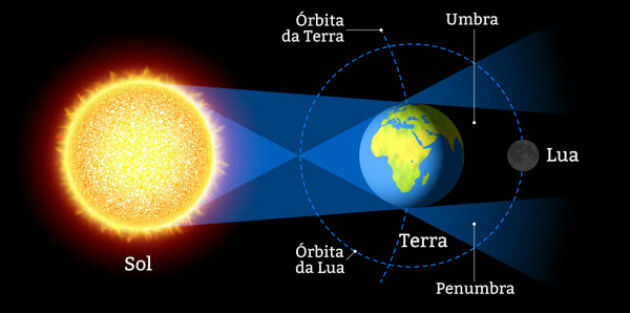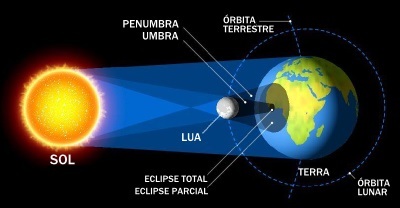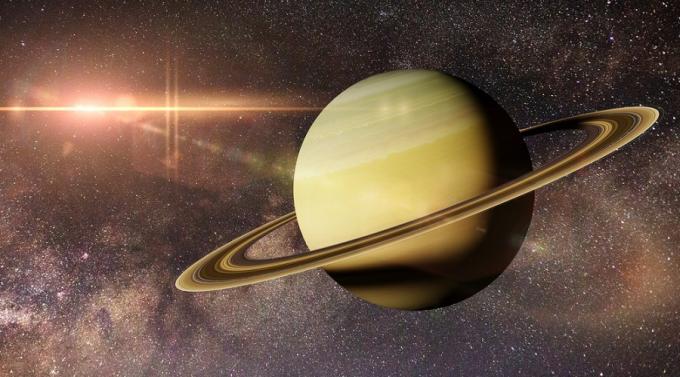Lunar Eclipse is a celestial phenomenon that occurs when planet Earth is between the Sun and the Moon. In this position, the Moon is completely or partially invisible for some time.
Moon Eclipses in 2021
In 2021, two lunar eclipses are planned, on the following dates and times:
- May 26th and the peak of the phenomenon will occur at 8:18 am
- November 19th and the peak of the phenomenon will occur at 6:02 am
Both eclipses can be seen on the American continent.
How does Lunar Eclipse happen?
The eclipse of the Moon happens at least twice a year, when the Moon is in its full phase.
It should be noted that it is the shadow that allows the phenomenon to occur. This shadow is produced by the existence of a body (barrier).

Note that there are two shadow regions cast by the Earth. They are called umbra and penumbra.
The umbra characterizes the region formed by the absence of light, where there is no direct sunlight.
The penumbra is a region of partial darkness, where only one part receives sunlight while the other part is blocked.
The solar eclipse, in turn, occurs when the Moon is in its new phase.
Eclipses do not always occur because there is an inclination (angle) between the plane of the elliptical orbit (the plane of the Earth's orbit around the Sun) and the plane of the Moon's orbit.
The frequency of occurrence of lunar eclipses depends on the position between the planes of the orbits of the Moon and Earth, the distance between the Moon and Earth and the position of the Moon along its trajectory.
If this inclination did not exist, we would have 2 eclipses per month: one solar (new moon) and one lunar (full moon).
Learn more about moon phases.
Eclipse Phases
In a total eclipse, before the Moon is completely obscured by the Earth's shadow, it passes through the twilight region.
At this point what happens is a reduction in the moon's brightness. Upon reaching the umbra region, parts of the Moon begin to no longer be visible.
When fully penetrating the Earth's shadow, the Moon will appear obscured, with a reddish tinge.
This coloration is due to the fact that the light rays coming from the Sun and that touch the Earth, suffer refraction due to the Earth's atmosphere.
Also, as blue light is more scattering, red light is reflected by the surface of the Moon.
Eclipse Types
According to the position of the Moon and the shadow cast by the planet, this phenomenon can occur in three ways: total, partial and penumbra.
Total Eclipse: Occurs when the Moon is in the area called “umbra”. In this case, the Moon is completely covered by the shadow of planet Earth.
Partial Eclipse: in this case, only part of the Moon is located in the “umbra” region (total darkness), which implies the partial view of the satellite, which remains covered by the Earth's shadow.
Penumbral Eclipse: Difficult to observe, penumbral eclipses occur as the Moon finds itself in an area called “penumbra”, a region of partial darkness, projected by the planet's shadow.
How about meeting the Solar eclipse?


